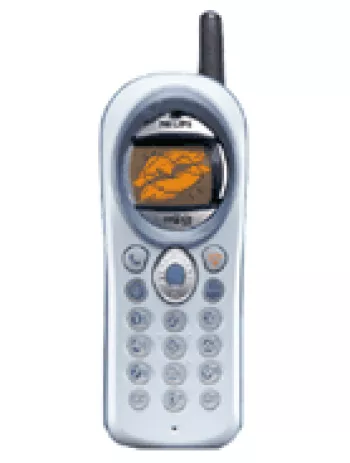
Introduction to Philips Azalis 268
The Philips Azalis 268 was introduced in 2000 as part of Philips' entry into the mobile phone market. It was designed for users who required a basic device without the complexities of modern smartphones. Despite being discontinued, the Azalis 268 remains a notable example of early mobile technology and represents an era when phones were primarily used for calls and messages.
Design and Build
The Azalis 268 boasted a compact and lightweight design with dimensions of 119 x 44 x 22 mm and a weight of 99 grams. This made it easy to carry and fit comfortably in hand. The phone utilized a Mini-SIM, which was standard for the time. The build quality was robust, making it a durable choice for everyday use.
Display and Interface
The phone featured a monochrome graphic display with a resolution capable of showing 5 lines of text. While simplistic by today's standards, it was adequate for its primary functions, including SMS messaging and basic navigation through the device's menus.
Network Capabilities
The Philips Azalis 268 operated on GSM technology, supporting GSM 900/1800 bands. It did not offer GPRS or EDGE capabilities, which were emerging technologies at the time, reflecting its status as a feature phone rather than a smartphone.
Battery Performance
Equipped with a removable Li-Ion 550 mAh battery, the Azalis 268 delivered up to 300 hours of standby time and up to 4 hours of talk time. This battery life was considered lengthy, ensuring that users did not need to recharge frequently.
Storage and Memory
The device did not include a card slot for memory expansion, which was typical for phones of its class. It kept call records for 10 dialed, 10 received, and 10 missed calls, reflecting the limited internal memory available at the time.
Sound and Alert Options
While it did not have a loudspeaker, the phone offered vibration alerts and supported downloadable monophonic ringtones. Users could also compose their own ringtones, providing a level of personalization uncommon for basic phones.
Communication and Connectivity
The Azalis 268 lacked modern connectivity options such as WLAN, Bluetooth, and radio features. It featured a WAP browser, which allowed rudimentary internet browsing, a novel feature at the time for mobile devices.
Additional Features
The phone included basic functionalities like SMS messaging, a clock, and an alarm. It came with a built-in game called "Bricks," showcasing the simple entertainment features available back then. The absence of support for Java applications was typical for feature phones.
User Experience and Interface
Operating a Philips Azalis 268 was straightforward due to its menu-driven interface, which emphasized text-based navigation. This simplicity was appealing to users who preferred uncomplicated, reliable communication tools.
Conclusion
Although surpassed by today's technology, the Philips Azalis 268 is a reminder of the rapid advancements in mobile phone developments. It served its purpose for those seeking basic communication features without the need for modern smartphone complexity.
Main Features of Philips Azalis 268
- GSM dual-band support (GSM 900 / 1800)
- Compact dimensions: 119 x 44 x 22 mm
- Lightweight design: 99 g
- Monochrome graphic display with 5 lines
- Support for SMS messaging
- WAP browser for basic web access
- Vibration alerts and downloadable monophonic ringtones
- Comes with a classic game: Bricks
- Removable Li-Ion 550 mAh battery
- Standby time up to 300 hours
- Talk time up to 4 hours
Drawbacks of Philips Azalis 268
- No GPRS or EDGE support, limiting internet connectivity.
- Discontinued status, making it difficult to find support or parts.
- Monochrome graphic display with low resolution.
- No card slot for memory expansion.
- Lack of camera functionality.
- No loudspeaker and no 3.5mm jack for audio accessories.
- Absence of modern connectivity features like WLAN and Bluetooth.
- No radio capability for listening to broadcast stations.
- Limited to SMS messaging without MMS support.
- Java is not supported, restricting application installation.
View Also
More Phones
All Rights Reserved +14266 Phones © Mobilawy 2025

























